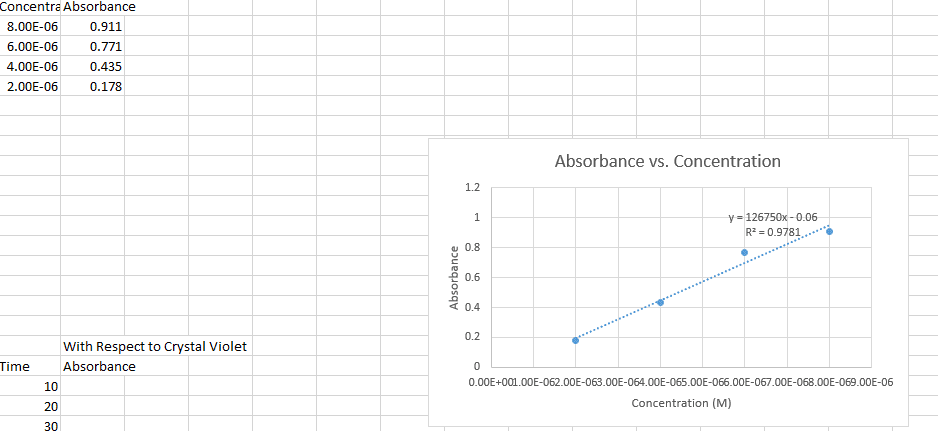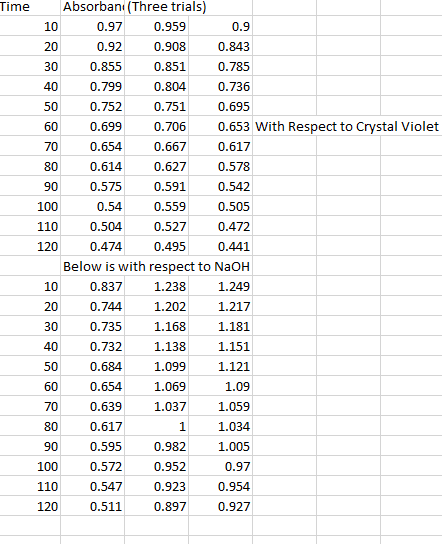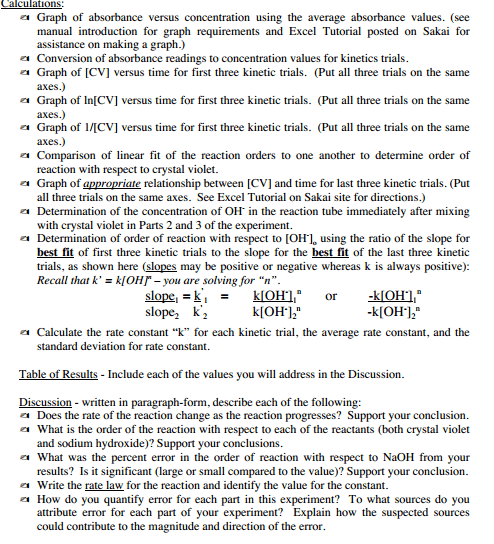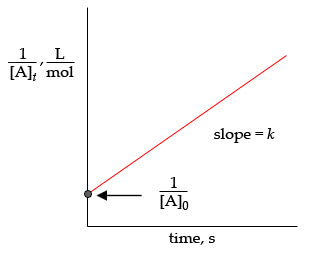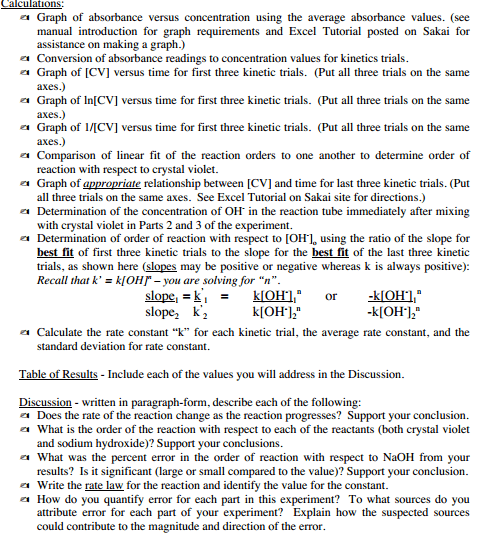A student finds that the kinetics graphs are most linear for ln(CV) vs. time. The first trial, with .050M NaOH, has a linear graphs with the best-fit equation y= -.00495x + .158. the second trial, run with .10M NaOH, has a linear graph with the best-fit equation y= -.00922x + .176. Based on these data, determine the overall rate law.
The rate of the reaction Y+Z to YZ is studied much like the reaction in this lab, except that both y and z absorb visable light, thus their concentrations can both be measured directly in a spectrophotometer. in trial 1, Z is held constant and Y is measured over time, producing the top three graphs. ( The top three graphs are (y) in a straight line decreasing with time. the second is ln(Y) starting high and slowly curving down over time. the third is 1/(Y) starting low and curving up). In trial 2 y is held constant and Z is measured over time. producing the bottom three graphs. based on these graphs, write the rate law for this reaction.
I know the second question is confusing but how do you determine the rate law for a reaction looking at the graphs of (y) ln(Y) and 1/(Y) and the same with Z.
A student finds that the kinetics graphs are most linear for ln(CV) vs. time. The first trial, with .050M NaOH, has a linear graphs with the best-fit equation y= -.00495x + .158. the second trial, run with .10M NaOH, has a linear graph with the best-fit equation y= -.00922x + .176. Based on these data, determine the overall rate law.
The rate of the reaction Y+Z to YZ is studied much like the reaction in this lab, except that both y and z absorb visable light, thus their concentrations can both be measured directly in a spectrophotometer. in trial 1, Z is held constant and Y is measured over time, producing the top three graphs. ( The top three graphs are (y) in a straight line decreasing with time. the second is ln(Y) starting high and slowly curving down over time. the third is 1/(Y) starting low and curving up). In trial 2 y is held constant and Z is measured over time. producing the bottom three graphs. based on these graphs, write the rate law for this reaction.
I know the second question is confusing but how do you determine the rate law for a reaction looking at the graphs of (y) ln(Y) and 1/(Y) and the same with Z.

